On 10 December, The Catholic Weekly is joining with The Mustard Seed Bookshop to launch a remarkable book: Keith Windschuttle’s searing indictment of the lynch mob-driven sham which led an innocent man to be convicted of the vilest crimes. What went wrong – and how? The Persecution of George Pell is a damning indictment of how the most fundamental principles of Australian democracy, criminal justice and truth in journalism were chucked out the window of Australian life.
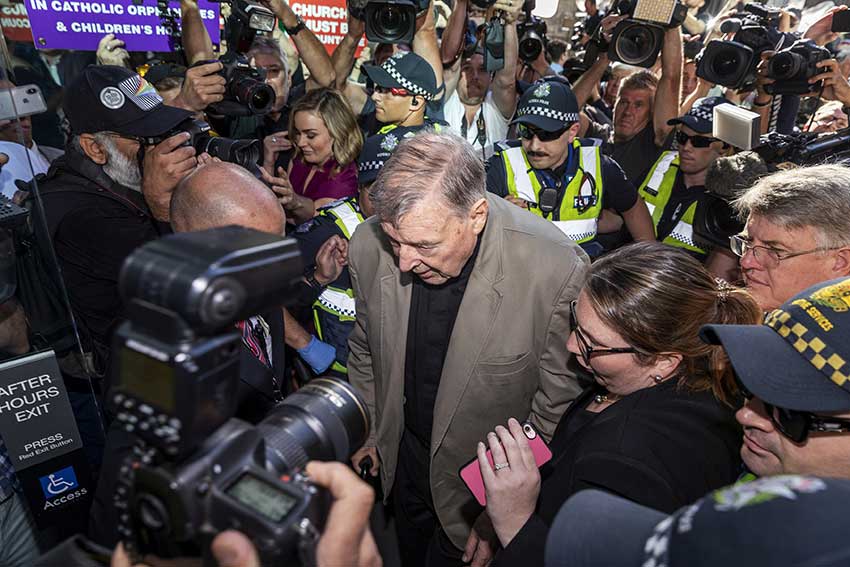
By Michael D. Colllins
Writer, historian and publisher, Keith Windschuttle has released an account of the prosecution, trial and ultimate acquittal by the unanimous decision of the High Court of Australia of churchman, Cardinal George Pell. The book will be launched in Sydney by The Mustard Seed Bookshop on 10 December.
Windschuttle’s latest book The Persecution of George Pell (Quadrant Books, Sydney, October 2020) is arguably his most important for the highly readable examination it makes of personalities and processes unknown to many but potentially significant for Australian institutions including the police, criminal justice system, media, public service and politics.
Windschuttle’s long career in Australian journalism, sociology, literature and publishing began as editor of Honi Soit at Sydney University in 1967/68 and culminated as editor of Quadrant since 2008 and now editor in chief of Quadrant Magazine in Sydney. Quadrant, now in its 64th year as an independent journal of opinion, was founded in 1956 by the Australian poet – and later academic – James McAuley and the Polish-Jewish patriot Richard Krygier. Its contributors provide a cross-section of commentators in literature, the arts, politics, journalism, the judiciary and the professions.
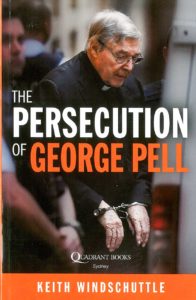
Common cause in targeting George Pell
Windschuttle presents this work as the story of how the highest levels of the police, judiciary and politics in Australia plus lobby groups, compensation lawyers and journalists for major news media, found common cause to persecute, convict and jail an innocent man. The innocent man is George Pell, Catholic Archbishop of Melbourne (1996-2001), Catholic Archbishop of Sydney (2001-2014), made Cardinal by Pope St John Paul II in 2003 and later again appointed by Pope Francis in 2014 to examine financial records in the Vatican and identify and correct irregularities.
A calculated humiliation
The cover photograph of Windschuttle’s book is memorable: it is of Cardinal Pell in handcuffs on his way to attend a hearing in the Victorian Court of Appeal on 5 June 2019 against his conviction by decision of a second jury on 11 December 2018. On that day Cardinal Pell was just short of 78 years, turning 78 on 8 June 2019 in poor health and scarcely a threat to Victoria Police or the Victorian public.
It is not clear what agency of the State of Victoria decreed that this elderly and infirm prisoner should appear in public in handcuffs or why, but it provided a useful photo opportunity for alert watching media. This was, in Windschuttle’s view, the second of two seemingly gratuitous acts which appeared designed to maximise the humiliation of the Cardinal.
A little earlier, on 13 March 2019, the Trial Judge elected to telecast his sentencing of Cardinal Pell, broadcast nationally for one hour and eight minutes, despite what Windschuttle asserts were protests by Cardinal Pell’s defence counsel (p. 11) and the knowledge that Pell intended to appeal his conviction. Cardinal Pell was also required to sign the Victorian Register of Sex Offenders for the maximum term of “life”, rather than the lesser periods of eight or 15 years available to the court.
He was, as already noted, just short of 78 years when that decision was made.
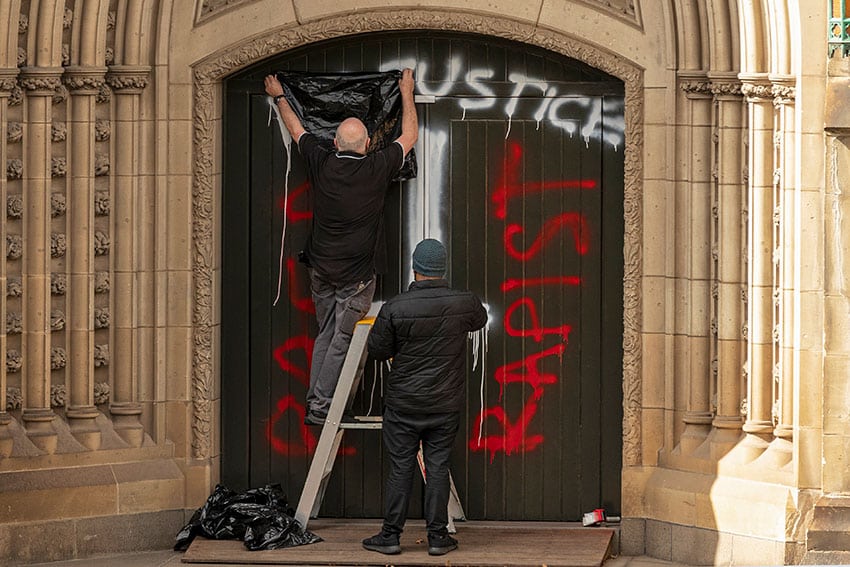
Implausible evidentiary deficiencies
The marked and in many respects implausible evidentiary deficiencies in the case on which Cardinal Pell was convicted were identified by the dissenting member of the Court of Appeal, Justice Mark Weinberg, acknowledged as one of Australia’s leading experts in criminal law, and by the seven members of the Full High Court in unanimously acquitting Cardinal Pell on 7 April 2020.
Windschuttle records those deficiencies in the evidence given and in the reasons for judgment of the trial Judge at pages 252 – 257. Both Justice Weinberg’s powerful analysis in dissent and the unanimous decision of the Full High Court appear to have carried conviction with many legal practitioners particularly jurists and those practising in criminal law, as being obviously correct.
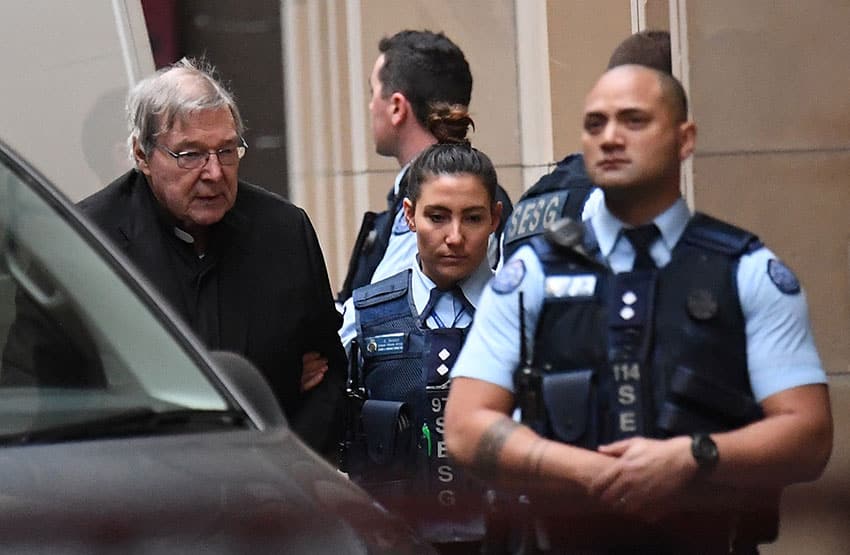
Scrutinising the media
What appears of particular value and interest in Windschuttle’s book is the sociological and media analysis offered in the first seven chapters grouped under the heading “The Culture Warrior and His Enemies”. These chapters and sub headings provide a useful precis of this part of Windschuttle’s book. They are:
- George Pell versus the Sexual Liberation Movement
- The Making of a Modern Witch Hunt, Part 1: – A Line Up of Bogus Accusations
- The Making of a Modern Witch Hunt, Part 2: – Ambitious Lawyers and Egocentric Journalists
- The Activism of the Royal Commission, Part 1: – Manipulating the News Media
- The Activism of the Royal Commission, Part 2: – Interrogation in Rome and Illogical Findings
- The Police Pursuit of Pell, Part 1: – A Lopsided Contest between Church and State
- The Police Pursuit of Pell, Part 2: – Trawls, Leaks and the Biggest Lie Any one of these chapters is likely to provide a useful and fruitful body of data for analysis and further investigation by opinion leaders, institutional advisors, statutory bodies and media.
A witch hunt and the role of social media
The methodology and initiatives employed by many, particularly the use of social media to bypass legal procedures, are described in detail, drawing on data compiled by Quadrant contributor and British philosopher, Chris Friel. Referring to Friel’s close analysis of the evidence given at the appeal courts and of the books so far written on the subject, Windschuttle writes:
“Part of this work has been a unique forensic investigation of the messages on social media that have passed back and forth between several of the major players in what Pell’s defence lawyer Robert Richter called the “Get Pell Operation” and which Friel himself labels a “witch hunt”.
” … the messages on social media that … passed back and forth between several of the major players [were described by] Pell’s defence lawyer Robert Richter [as] the “Get Pell Operation” … [ while analyst] Friel himself labels [them] a “witch hunt”
“Friel has studied the Twitter networks that have worked in Australia to influence journalists writing on the subject, to connect police with journalists willing to publish leaks, and to pressure three governments, New South Wales, Victoria and the Commonwealth, to initiate separate inquiries based on the claims and interests of victims’ lawyers and activist groups”.
The hostility of Twitter
Citing Friel, Windschuttle says the Twitter networks devoted to the Pell case invariably were hostile to Pell:
“They also audaciously ignored Australia’s laws of defamation and sub judice throughout the entire period of Pell’s persecution, including the time of his committal hearings, the time of his two trials and the time of his two appeals.
“As Friel observed, their authors said what they liked about Pell no matter how damaging and untrue it might be and set an example on social media that encouraged others to do the same” pp. 101, 102.
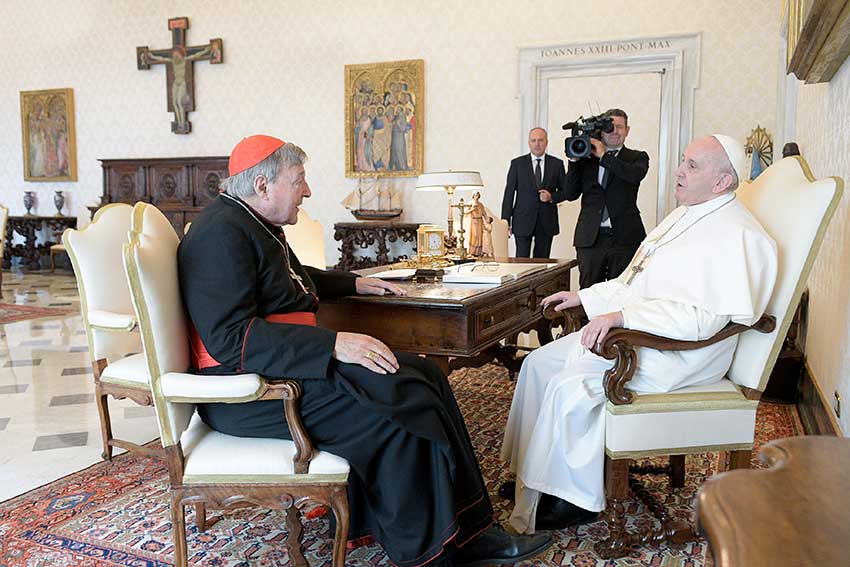
Significance
While Cardinal Pell was acquitted, Windschuttle argues that the ultimate adversary in his ordeal was an ideology which remains alive and active. Ironically in Cardinal Pell’s case it pursued the man described by Windschuttle as in the very forefront of addressing and eradicating clerical sexual abuse of children. Windschuttle writes:
“In the 1990’s, when popular opinion swung strongly against this (police and others giving bishops responsibility for dealing with complaints about priestly sexual misconduct) Pell’s Melbourne Response was in the vanguard of reform and for the next 15 years at least it had the full support of the Victorian Police.
“But when popular opinion was persuaded that the churches and their priests were the problem, not the solution, an Australian Royal Commission and the Victorian Court of Appeal re-focused their perspectives too.
Somersault
“From a position that was once part of the move to reform, the Catholic Church and its Archbishop (Pell) now became the villains of the drama.
From a position that was once part of the move to reform, the Catholic Church and its Archbishop (Pell) now became the villains of the drama
“The idea that some people who authorities believed to be victims might have invented their stories for personal gain, or revenge, or to attract attention, or for any similar reason, was unthinkable to those in thrall to the prevailing ideology.
“They were also blind to another of its consequences: it was an insult to genuine claimants to place spivs and crims among the same ranks as those whose lives had truly been ruined by sexual predators ….” (Page 395).
False assumptions
This challenging proposition that not all complainants may be in good faith or may be mistaken and not all persons accused may be guilty, is copiously illustrated in Windschuttle’s book with case-studies of accusations that are mendacious, or in some cases tragically the product of troubled minds.
However, Windschuttle as an investigative journalist himself, reserves his strongest criticism for the role played by the media in the persecution of George Pell, which can be found on pages 395-396:
“The most disappointing institution of all in the Pell case has been the fourth estate of our democracy … Not all but most of the news media not only took the same side against him as the baying mob, they became one with the baying mob … they completely failed to see this persecution from Pell’s perspective.
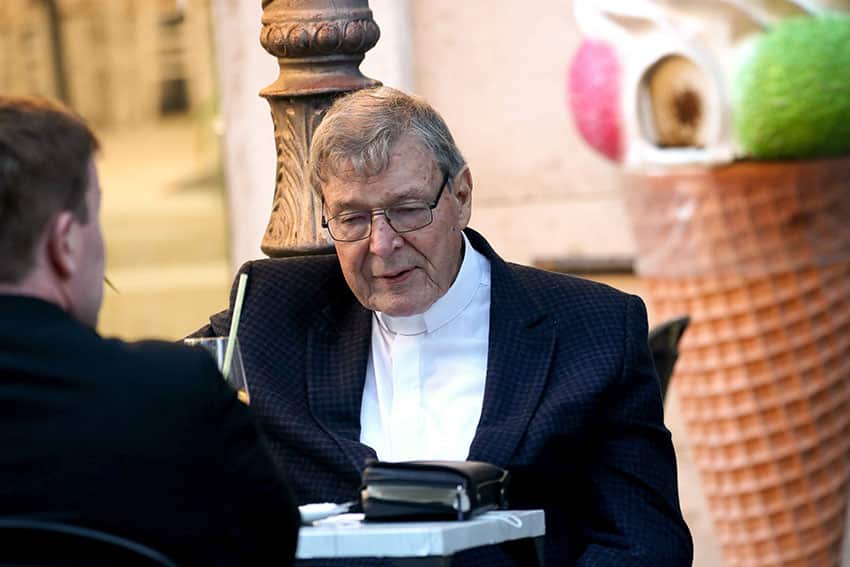
An innocent man fighting for his life
As Chapter Three argues, throughout this whole drawn out case, Pell was literally fighting for his life, facing the very real prospect of the total destruction of his reputation and status, and watching as immeasurable damage was done to the institution to which he had devoted his life.
“Moreover, he was accused, tried and jailed for just about the most vile crime a normal masculine man like him could commit.
“He faced insult, humiliation and utter disgrace.
“But the baying media mob, from their safe places behind corporate walls, hooted him ….”
To the brink of an abyss
Windschuttle concludes that the Pell case involved far more than the fate of one man or the multiple failure of key institutions:
“So the decision of the High Court of Australia on 7 April 2020 was more than the end of a witch hunt and the acquittal and release from prison of an innocent man.
“Legally, politically and morally, Australia had walked to the end of a civilisational abyss, and peered in.
“The High Court allowed us to take a step back, and walk away.
“It was a near-run thing”.
Ed. – At the 10 December launch, to be held at the Archdiocese of Sydney’s Polding Centre in Sydney’s CBD on 10 December, Mr Windschuttle will speak about why he wrote his book and what he found before answering questions from the audience. For those wishing to attend the book launch of The Persecution of George Pell on 10 December, social-distancing requirements mean booking is essential. Details are below.
Related
